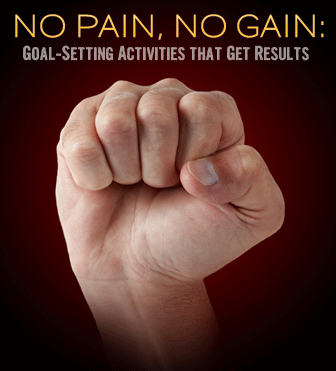ESL Lesson Pace: 5 Tips for Class Time Management You'll Thank Us For


Successfully presenting goal-setting and engaging students enough to really have them do some self-evaluation is challenging but also very worthwhile for everyone. Give these strategies a try and your students will be climbing mountains in no time!

Start off with a brief discussion of what goals are and why they are important. Provide an example or two from your own life or some other general example. Using examples that you can then use to state a specific goal are best. You could talk about practicing a sport, learning an instrument, or getting a degree. Get them to ponder some questions like, why is goal-setting important to us? Why do we need to be very specific about our goals in life? Do you have goals that you are working toward right now?
From the initial discussion you’ll want to have students do some brainstorming. First brainstorm as a group, and get a list going of goals or types of goals that exist. From that list, ask the students if any of their goals for themselves are up on the board. Then ask each student to brainstorm about three of their personal, professional or academic goals. Have a discussion beforehand about the difference between long and short term goals, and let the students choose which ones they would like to brainstorm on. It is a good idea for the teacher also to do this, either ahead of time or along with the students. You’ll want to reference your goal brainstorm before anyone else’s.
Once they have done some brainstorming and there is some chatter happening, share your brainstorm with the class. Perhaps your topics include a trip to Switzerland, buying a new home and losing ten pounds. You can supply some of the information that you brainstormed. This is a perfect jumping off point for discussion because all three of the goals listed are very different goals with varying degrees of potential. Have the students ask you questions about your goals. When do you want to do this? How will you pay for that? Why Switzerland? Let them be their own best example because very shortly all the questions they are asking you, will in turn be the same ones they ask themselves as well as one another. You’ll want to be aware that goals are very personal. If students are shy about what their goals are, be sure to respect that and don’t force the issue too much. Choose students who are willing to discuss their goals and go through the model that you provided with your goals. You want to facilitate discussion, questions and enthusiasm.
The next step in goal-setting is going beyond talking about goals with generalities. It is now time to pick one of the three goals and settle on it very seriously as the one to plot out. The focus should stay positive and be sure that students choose attainable goals. Introduce the acronym SMART. We want to plot out goals that are SMART (Specific, Measurable, Achievable, Realistic, Timely):
SMART
Specific: If a goal is too general, it is also too hard to pin down. I want to travel is too general. Focus your goal, and answer the who, what, when, where, why
Measurable: Measuring a goal is very important because it answers the questions of: how much/many, how often?
Achievable: Is the goal achievable for you and how long do you estimate it will take?
Realistic: Is the goal relevant and realistic to your life? Will you be able to follow-through with the goal? Will you need help to accomplish your goal
Timely: Is it a timely goal for you right now, and also will you be able to achieve you goal in a timely way. Is it a long term plan or a short term plan?
Discussing SMART goals in detail can help students hone in on the goal the really want to work on if they are unsure, and it can also provide some very real guidelines as to what is realistic. At this point, there is a certain amount of self-reflection and probably lots of questions. Let the students work out which goals they are going to focus on, and have them write down a goal statement. Provide some good examples that include a specific goal with a timeframe.
Once students have worked out the kinks in their goal statements, the last step is to look at the possible roadblocks, fears, and anything else that might get in the way of completion of the goal. This is important to do because goals aren’t always easy to achieve and if the students can analyze prospective problem areas, they may be able to head them off instead of getting derailed. You can have students do more brainstorming about this, or group work where they ask each other very important questions. Then students can take some time to write out things that might hinder the completion of the goal. With this, they can then work out solutions to their roadblocks and also think about how they will be held accountable to the goal. Do they plan to hold themselves accountable or do they have some kind of support system that will help them when they reach those roadblocks?
It may present challenges along the way, but it will enhance the classroom dynamics and provide a wealth of support and enthusiasm.